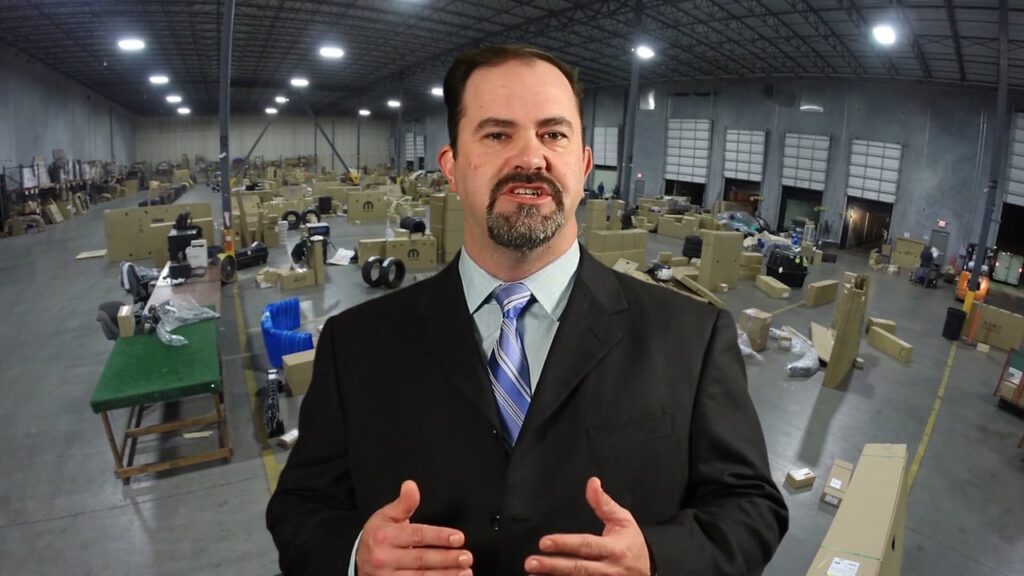At the heart of the Ford Car Assembly line, the ideals of supply chain management were birthed. The Ford Supply Chain thus became a precursor to all supply chains. Behind every product, there is a supply chain. Right now, you are probably reading this from a laptop or mobile phone. Behind that phone is a supply chain.
Thus, at its basics, a supply chain network can be termed as a network of companies located in different counties involved in:
1. Product Design
2. Manufacture
3. Delivery to Customers
Components used to manufacture a product may be sourced from several countries, assembled in another and distributed all over the world. Most importantly in supply chain, we are speaking of things such as Business to Business logistics, Business to consumer logistics, service logistics and reverse logistics. Key players in the supply chain include the suppliers, original equipment manufacturers (OEM), distributors, customers and service centers.
Supply Chain has grown to include two kinds of globalization. One is Horizontal where the Multi-national corporations duplicate the same activities in multiple countries. That is similar to when British American Tobacco had a factory here just as it did in Kenya. In vertical globalization, the MNCs or firms locate different stages of production in different countries. Take the case of Apple computers, its computers are assembled in china, yet the design takes place in America.
The supply chain network is usually made up of multi-tiers. It’s important that these are mapped and monitored well as a breakdown at one tier always affects the entire chain.
There are three flows in the supply chain network. These include the material, information and financial flows. Or rephrased in other words:
1. Logistics Network which provides a streamlined material flow between all partners thus reducing lead time and cost.
2. Communications Network which provides information integration between companies of supply chain networks.
3. Financial Network. This one connects all institutions providing funds, letters of credit and insurance. A letter of credit is a letter from a bank guaranteeing that a buyer’s payment to a seller will be received on time and for the correct amount. In the event that the buyer is unable to make payment on the purchase, the bank will be required to cover the full or remaining amount of the purchase.
In the supply chain, there are three sub-networks:
• Demand Sub-network: consists of manufacturing, distribution, retailing, logistics and finance. Perfect delivery is important. Today, perfect delivery has come to mean six sigma delivery which implies that defects should be less than 1 in a million.
• Supply sub-network: Here we talk of business to business (B2B) network consisting of suppliers, manufacturers, inbound logistics, financial institutions and freight forwarders.
• Service Sub-network: connects consumer with suppliers and manufacturers and after-sales service centers.
Finally, we have to acclimatize ourselves to the three business processes in supply chain.
1. Procurement: this involves sourcing of raw materials and components from the suppliers, vendor and logistics provider selection, delivery scheduling and inventory management.
2. Manufacturing: this could be in a single location or geographically distributed.
3. Distribution and Retail: this consists of packaging and transportation and warehousing. Options include direct shipping or outsourcing to third parties.
The financial supply chain joins the supplier, manufacturer, retailer/distributor and the customer. In the first part, there is the goods supply chain with a forward movement of documents and goods to the customer. This requires demand forecasting. In other cases, Just-in-time manufacturing has taken over. Here, no inventory is kept. It costs money to keep inventory. However, this has its downsides, if one chooses to go the Just-in-time path, one must ensure that there’s zero breakdown in things such as equipment.
In the second part in the financial supply chain. Here, there’s a backward movement of documents and money. It requires cash-flow forecasting or just-in-time cash.
A Brief of Six Sigma
Six Sigma is a strategy to improve customer satisfaction and shareholder value by reducing variability in every aspect of your business. When you use 6 sigma, you deliver customer satisfaction and cost-improvement results faster. Sigma is therefore a way to quantify perfection.
3 Sigma is the historical standard that implies 93.32% perfection.
4 Sigma is the current standard employed by most technological companies. Here, it’s 99.38% perfection.
6 Sigma is the future standard. It implies 99.9997% perfection or just 3.4 errors per million opportunities.
Why not choose 3 Sigma?
The reason 3 sigma ought to be ignored is because of the following statistics that arise while using it:
-20,000 lost articles of mail per hour (Post Office)
-15 minutes of unsafe drinking water each day (National Water and Sewerage Corporation)
-8,000 incorrect surgical operations each week (Mulago Hospital)
-2 short/long landings at most major airports each day (Entebbe Airport)
-200,000 wrong drug prescriptions each year
-No electricity for 7 hours each week (UMEME)
-40,5000 newborn babies dropped each year
Compare that to the statistics from 6 Sigma
-1 incorrect prescription every 25 years
-3 newborns dropped every 1 century.
As sigma level increases, cost and cycle time go down. Thus as we think about Supply Chain networks and management, we ought to think about the Six Sigma path.

